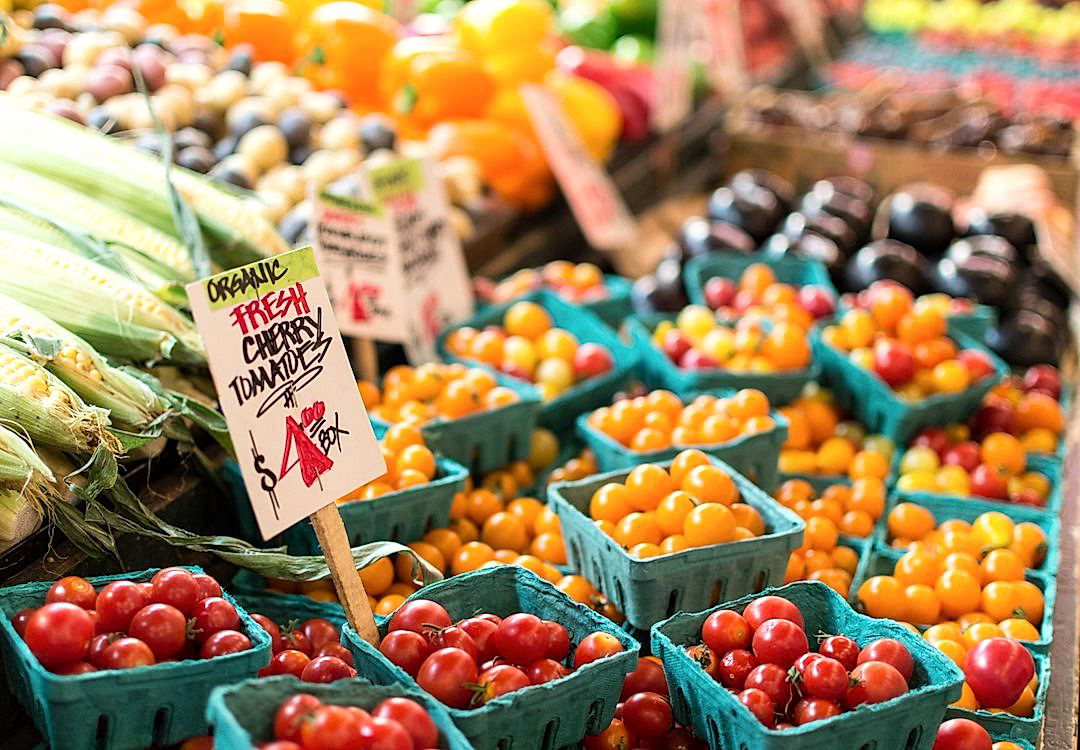Understanding the nuances of price adjustments in the produce retail sector can be the key to maximizing profits, managing waste, and improving customer satisfaction.
Pricing is undeniably a vehicle that can drive the commercial success of a business.
However, it is not a one-size-fits-all strategy.
Customization, driven by seasonality, market demand, and product perishability, can significantly boost business performance.
Traditional pricing strategies often fail to reflect this dynamism.
In this realm, a dynamic pricing strategy could indeed serve as a potent tool for both survival and growth.
Strategies For Dynamic Pricing In Produce Retail
1. Seasonal Pricing based on Supply and Demand Shifts
One of the most effective strategies in dynamic pricing for produce retail is the implementation of seasonal pricing based on shifts in supply and demand.
Offering reduced prices for perishable goods in surplus during their peak harvest seasons encourages increased consumer consumption, essentially maintaining the equilibrium of the supply chain.
Dynamic pricing systems can efficiently track changes in supply and demand, allowing for adjustments in product pricing to be made as soon as these shifts occur.
An abundance of produce will usually cause a reduction in price, creating an incentive for consumers to purchase more of these items.
However, when there is a decline in supply due to off-peak seasons or poor weather conditions, prices may increase compared to those during periods of plentiful supply.
Applying the principle of supply and demand, these prices accurately reflect the fluctuating availability and quality of produce throughout the year, providing an intuitive pricing system for consumers.
Moreover, since produce quality and availability are inherently seasonal, it’s important that these fluctuations in the market are consistently reflected in your store’s pricing strategy.
A well-structured dynamic pricing strategy can ensure the economic sustainability of your business by accurately mirroring these tribulations of the market.
The application of seasonal pricing also helps in maintaining freshness and reducing wastage in the supply chain, key considerations for both retailers and consumers alike.
While this system greatly benefits from the integration of AI and algorithms for faster and more accurate adjustments, it’s important to remember that human intervention and expertise in understanding market shifts are equally crucial.
It is a delicate balance between technology and human insight – utilizing the efficiency and accuracy of AI, while relying on the expertise and perspective of seasoned professionals.
In order to make the most out of this strategy, regular analysis of sales data is essential in identifying periods of high and low demand, as well as discerning customer buying behaviors and preferences during such periods.
Identifying these patterns will enable you to predict periods of demand surge with more accuracy, allowing you to price your produce accordingly and maximize potential profits.
Effective seasonal pricing models can be extremely beneficial not just for businesses, but also for end consumers who are able to gain the maximum value from the produce they purchase due to accurate reflection of market prices.
With a proper understanding of dynamic pricing and diligent implementation, retailers can successfully incorporate seasonal pricing in their pricing strategy, helping them to navigate swift shifts in supply and demand and achieve overall business sustainability.
2. Implement surge pricing during peak shopping times.
In the realm of dynamic pricing strategies for produce retail, the implementation of surge pricing during peak shopping times stands as a key tool.
This strategy, born in the transportation industry, involves instigating price hikes when demand overstrips supply.
Within the context of produce retail, this may mean raising the prices of certain products during periods of high consumer demand.
For example, strawberries might become more expensive during Valentine’s Day, while pumpkins may see a price surge in the weeks leading up to Halloween.
Applying this concept to peak shopping times – such as weekends or evenings after work – could be hugely beneficial for retailers.
By charging more for products during the times when most customers are shopping, retailers can maximize their profitability.
Not only can retailers earn more profit per item, but surge pricing also encourages consumers to shop during off-peak times to save money.
However, for this strategy to be successful, it requires a deep understanding of both customer shopping habits and the elasticity of demand for different products.
Big data analysis can greatly assist in deriving insights in these areas, enabling retailers to set optimal surge price points.
Some may worry that customers will be put off by the fluctuating prices, but transparency can help mitigate this risk.
By explaining the reasons behind the price adjustments – such as increased demand or higher supplier costs – customers are more likely to accept them.
Moreover, offering price matches or guarantees during non-peak hours can give customers the assurance they need to continue shopping with you.
Effective communication of these policies can be facilitated through your website, in-store signage, or direct marketing channels like email newsletters.
By implementing surge pricing during peak shopping times, produce retailers can tap into the financial benefits that come with dynamic pricing strategies.
While it may require some initial adjustment and careful strategy, the potential for increased profitability makes it a strategy worth considering.
3. Discount perishables nearing their expiration dates.
One of the key strategies for dynamic pricing in the produce retail industry involves discounting perishable items nearing their expiration dates.
Given that fresh produce has a limited shelf life, retailers are often faced with the challenge of managing waste and minimizing losses.
Discounting these products as they approach their expiration dates can help to stimulate demand and incentivize consumers to make a purchase.
By doing so, retailers not only reduce waste, but also recover some of the initial investment that went into procuring these items.
Effective implementation of this strategy requires a deep understanding of consumer purchasing behavior, as well as the capability to react quickly as produce nears its sell-by date.
Generous discounts on perishable items can encourage impulse buying.
Impulse purchases often result in increased sales and improved customer satisfaction due to the perceived value of the deal.
Moreover, this approach can often lead to customers buying other non-discounted items, thereby increasing overall sales.
However, it is essential for retailers to strike a balance when implementing this strategy.
While heavy discounts can drive sales, they could also lead to lower profit margins if not managed effectively.
Retailers need to monitor the rate of sales and adjust the level of discounting accordingly to ensure profitability.
Furthermore, they must ensure that discounted items are still of good quality, as selling rotten or spoiled produce could damage the retailer’s reputation.
If implemented correctly, discounting perishable items nearing their expiration dates can be a powerful tool for both minimizing waste and maximizing sales.
Like all pricing strategies, it should not be used in isolation, but as part of a broader dynamic pricing strategy.
4. Adjust prices based on competitors’ rates.
In the world of produce retail, staying competitive is fundamental to succeed.
One of the most effective strategies to remain competitive is through dynamic pricing based on competitors’ rates.
Competitor-based pricing is a strategy whereby the retailer sets their prices relative to the prices of their competitors.
Instead of focusing on costs or demand solely, this strategy takes into account what others in the market are charging.
This iterative process helps produce retailers maintain a pulse on the market.
It provides an external frame of reference and allows the retailer to position their products efficiently within the market.
To successfully implement this strategy, retailers must continuously monitor the prices of their competitors.
By accurately tracking competitors’ prices, retailers can adjust their own prices proactively and reactively, maintaining competitiveness without compromising profitability.Retailers can take advantage of automated pricing tools or services for real-time competitor price tracking.
These software tools help retailers identify and respond to competitor price changes efficiently.
It’s worth noting that while monitoring competitors’ prices, retailers should also consider other factors such as product quality, brand reputation, and customer service offered.
Retailers need to remember that customers don’t just consider the price, they also consider the value they are getting for their money.
If a retailer offers a higher quality product or better customer service, they may be able to justify a higher price and still remain competitive.
Overall, adjusting pricing based on competitors’ rates is a dynamic pricing strategy that needs a comprehensive understanding of the competitive landscape, competitors’ product offerings, and effective monitoring tools.
It’s not just about mirroring competitors’ pricing but about having a defined competitive strategy while providing genuine value to customers.
5. Leverage AI algorithms for real-time price adjustments.
Dynamic pricing relies heavily on technology, with Artificial Intelligence (AI) playing a crucial role.
By making use of AI algorithms, businesses in the produce retail sector can achieve real-time price adjustments.
This technological resource provides an avenue for immediacy to match supply and demand shifts as they happen, and not after they have already made significant impacts.
Through leveraging AI algorithms, businesses establish a system that dynamically adjusts prices with high accuracy, speed, and efficiency.
AI algorithms can analyze large volumes of data quickly and generate meaningful insights, thereby saving valuable time and resources.
Thus, produce retailers can make informed pricing decisions swiftly, keeping their pricing strategies flexible and competitive.
Furthermore, AI algorithms, especially when integrated with Machine Learning (ML), can predict shifts in market trends, becoming an anticipatory tool rather than just a reactionary one.
In essence, AI and ML can provide an advanced level of reflection on data, revealing patterns and trends that humans may overlook or misinterpret.
Another advantage of using AI algorithms for dynamic pricing is their capability to weather fluctuations in the produce retail market.
Produce is a highly volatile market with prices that are affected by numerous unpredictable factors, ranging from weather, disease outbreaks, transportation costs, labor issues, and changes in international trade agreements.
By leveraging AI, retail businesses can stay resilient amidst these impulsive market fluctuations.
Moreover, AI can help create pricing strategies that are not only competitive but also profitable in the long run.
Forecasting algorithms can predict customer behavior and calculate the optimal prices to maximize the business’s profit margins while maintaining fair prices for customers.
In short, the use of AI algorithms for real-time price adjustments provides a viable solution for a successful dynamic pricing strategy for businesses in the produce retail sector.
The era of AI has made it possible for businesses to instill a robust, reactive and preemptive pricing strategy that counters the rapid market changes and uncertainties in the produce retail sector.
The Bottom Line
Adopting different pricing strategies such as seasonal pricing, surge pricing, and perishable discounts can substantially increase profitability by tailoring prices to shifts in supply and demand.
Moreover, monitoring competitors’ rates and adjusting prices accordingly ensures competitiveness in the market.
Advancements in technology have further revolutionized pricing strategies, with the advent of AI algorithms for real-time price adjustments providing unprecedented accuracy and efficiency.
All these practices combined make for a much more dynamic and responsive pricing system, empowering businesses to maximize their profits while maintaining a competitive edge in the ever-evolving market landscape.




